IMPERIAL CHINA PRINCIPAL IDEAS Large territory: always
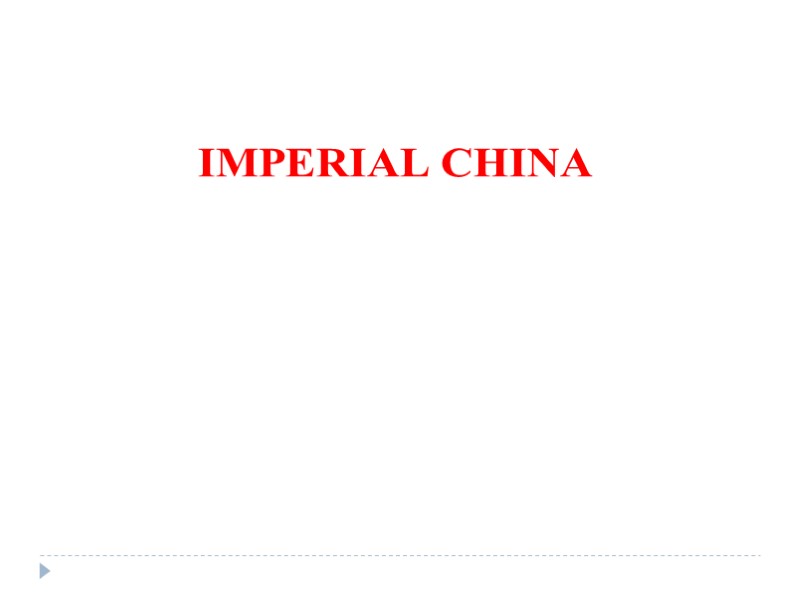
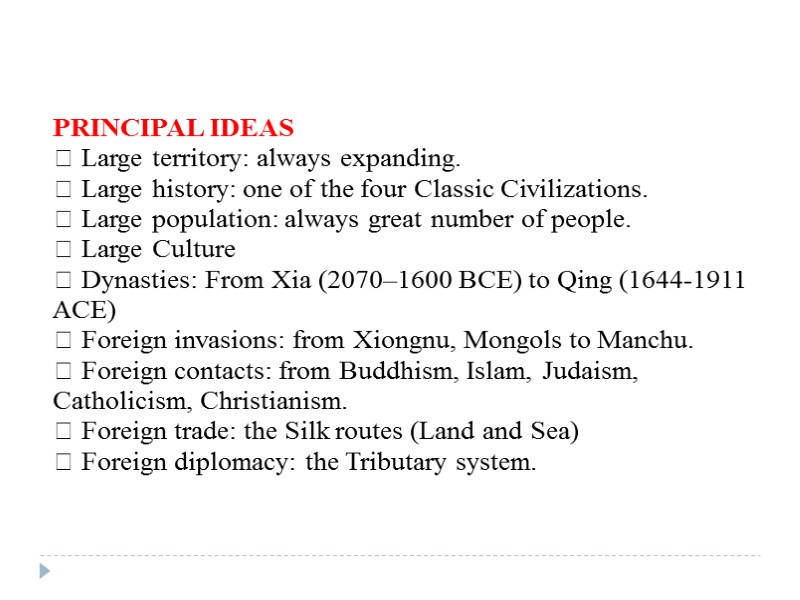
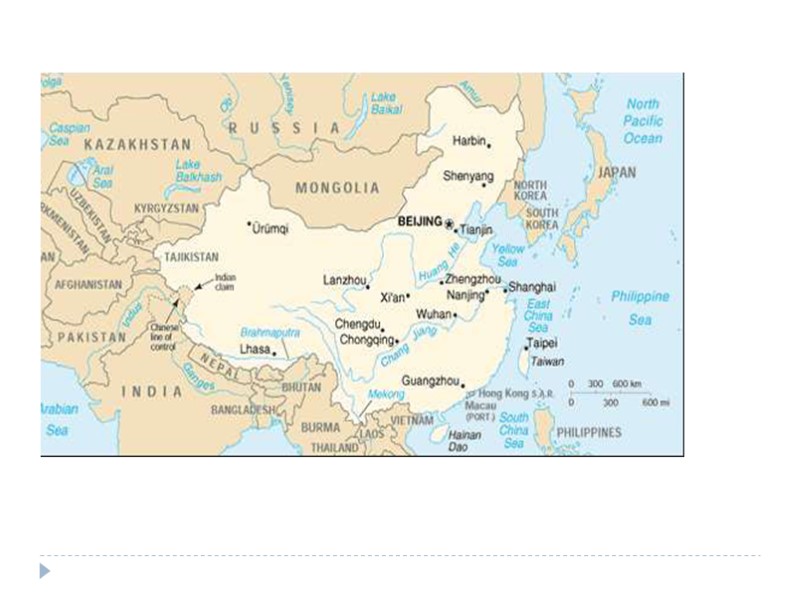
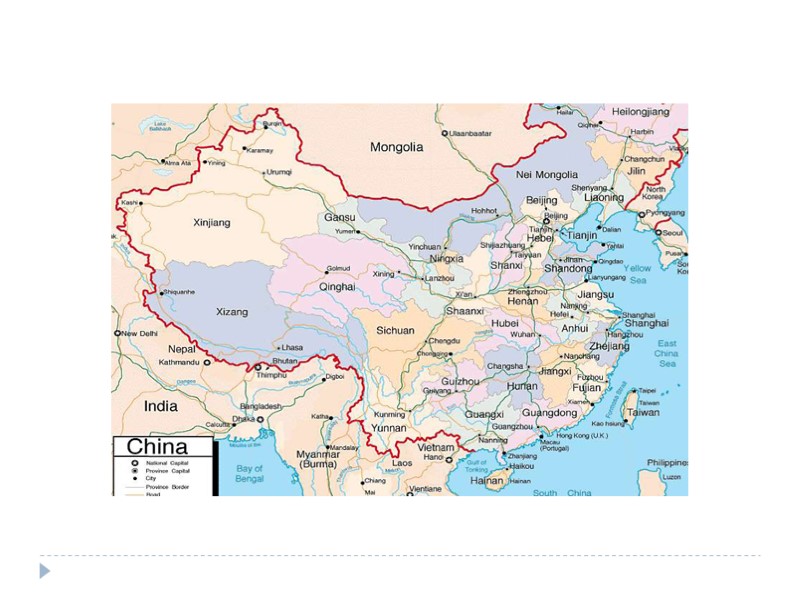
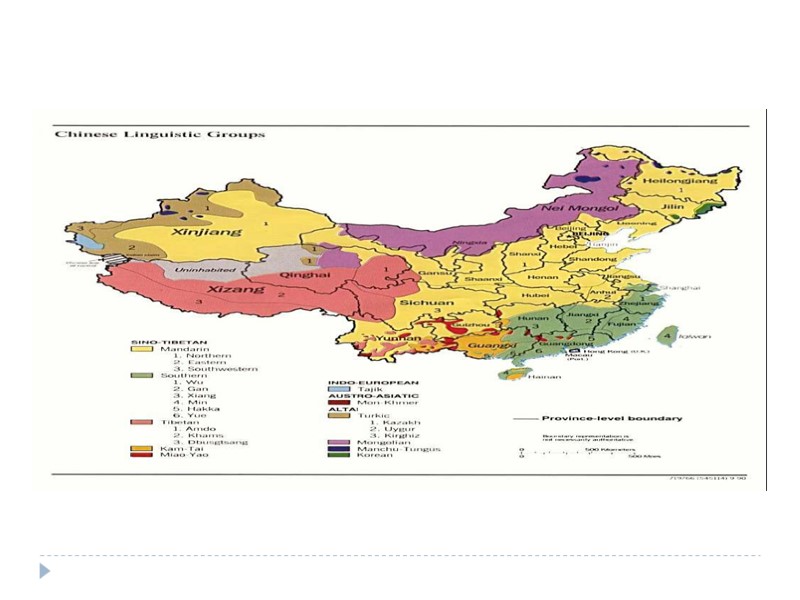
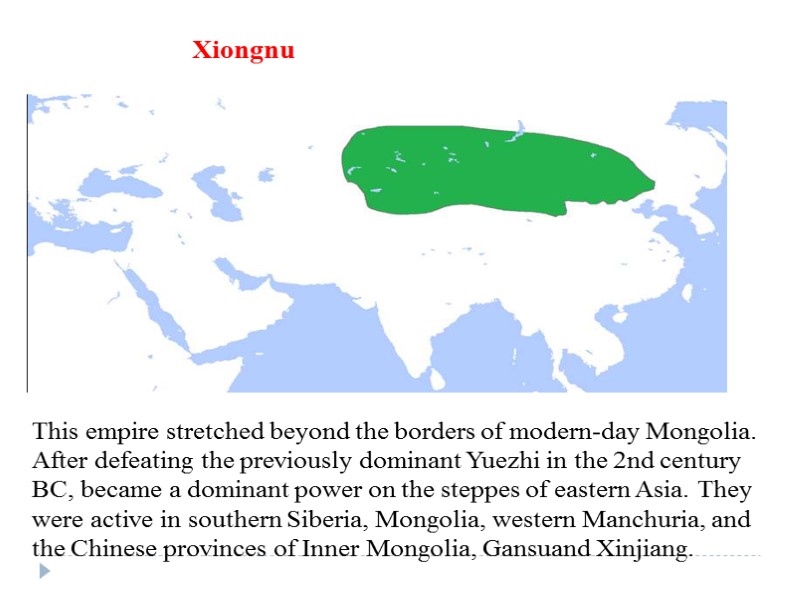
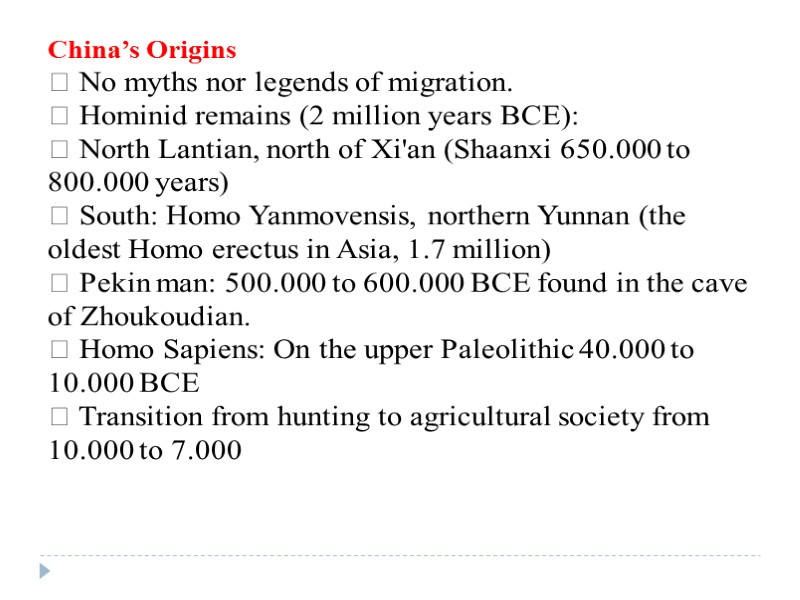
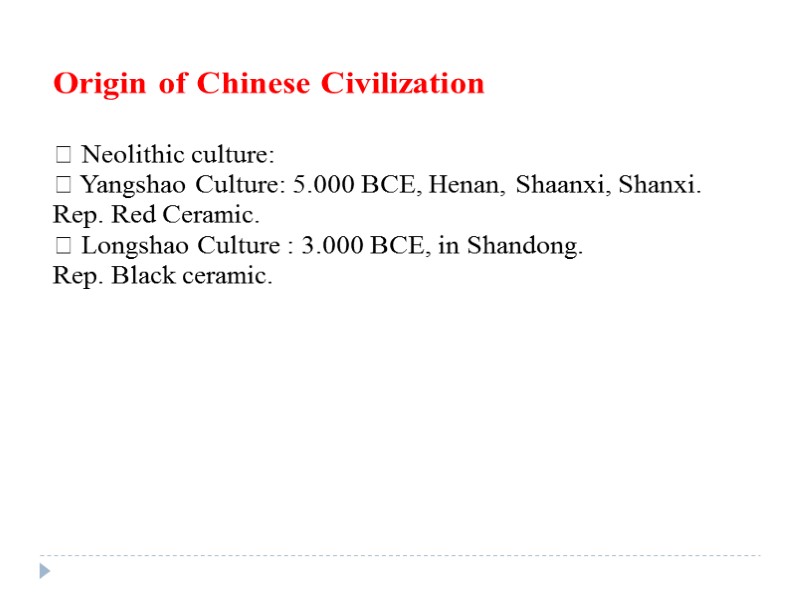

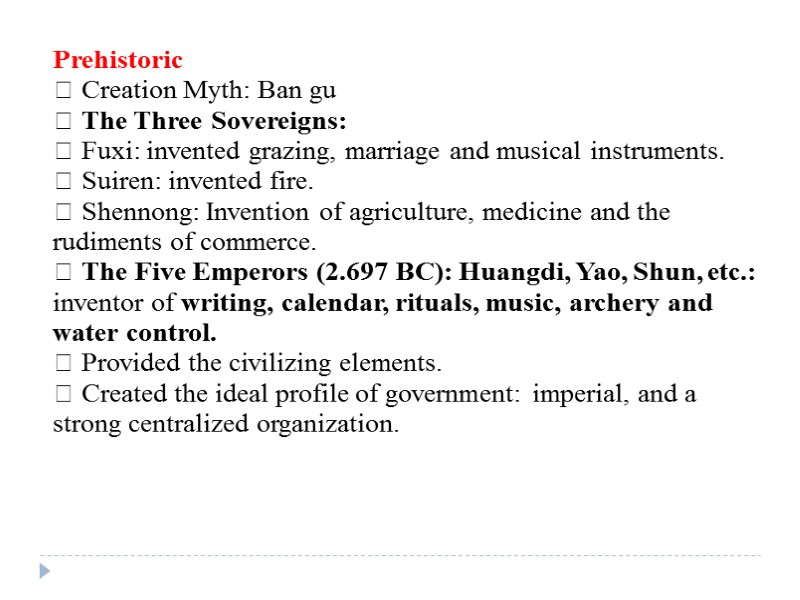
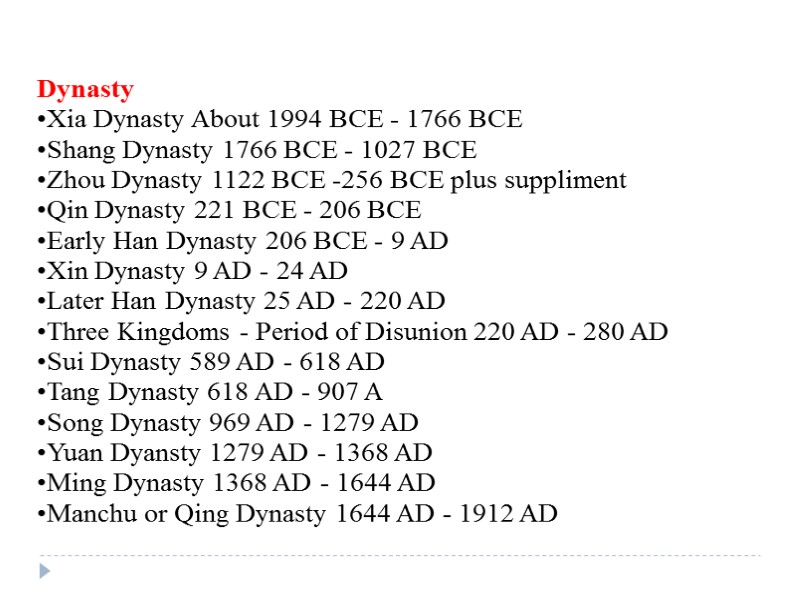
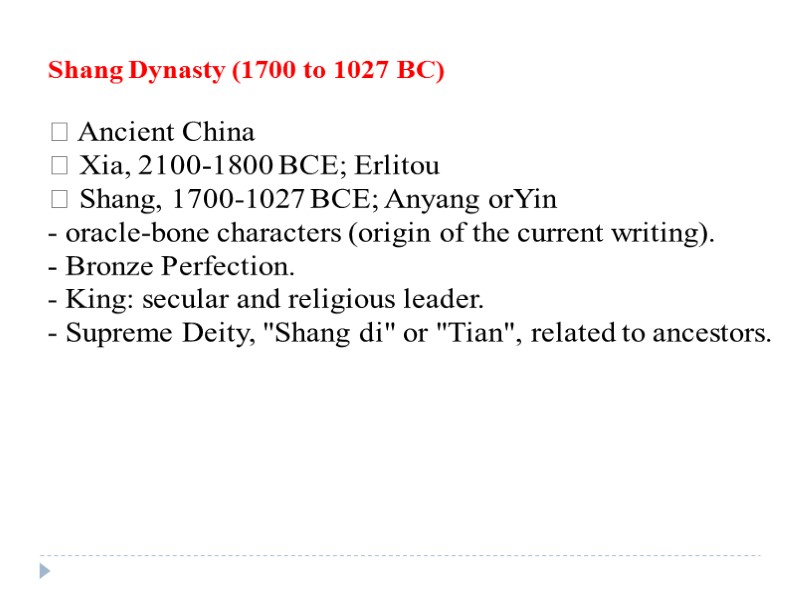
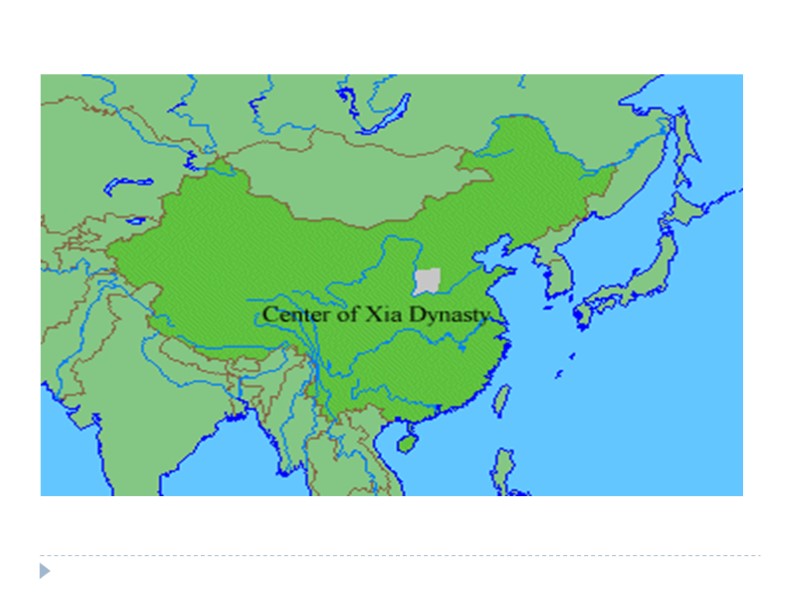
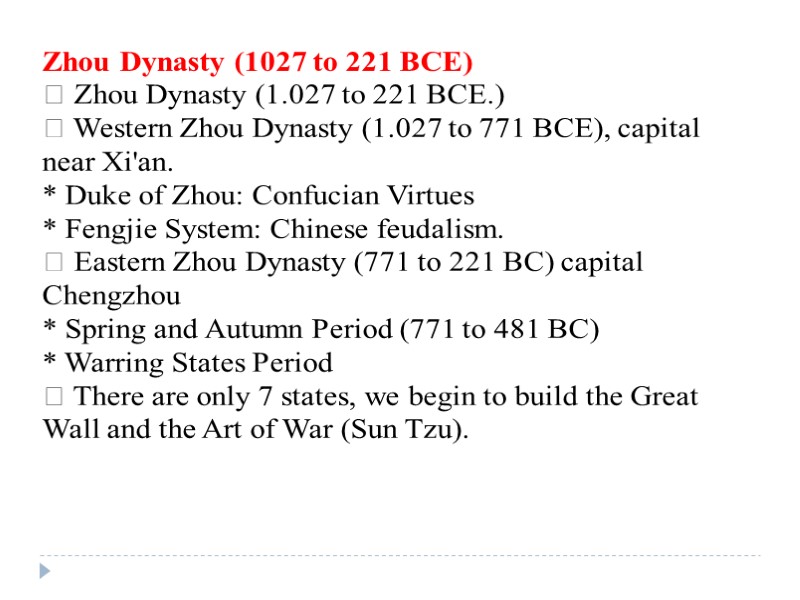
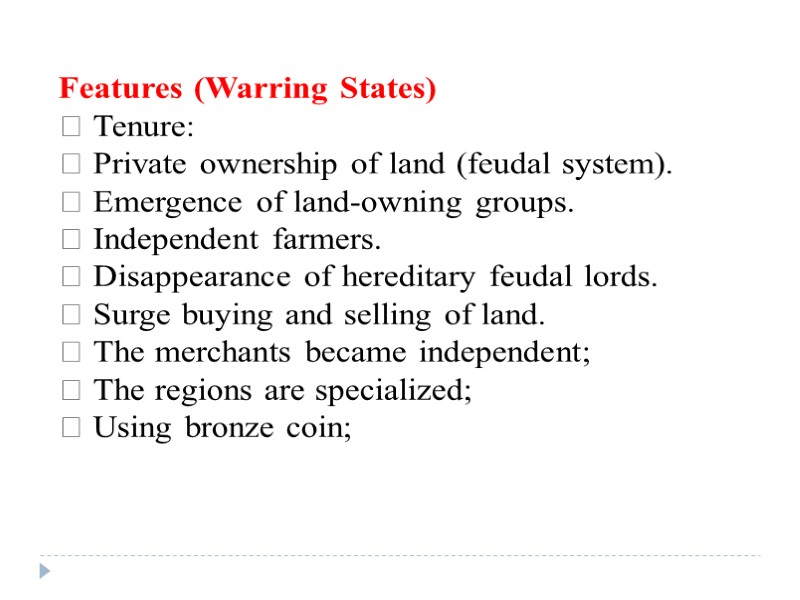
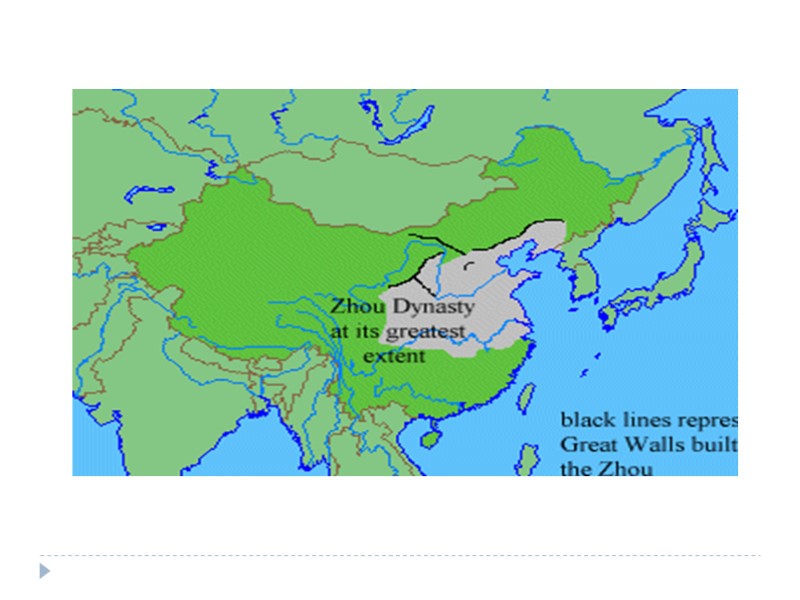
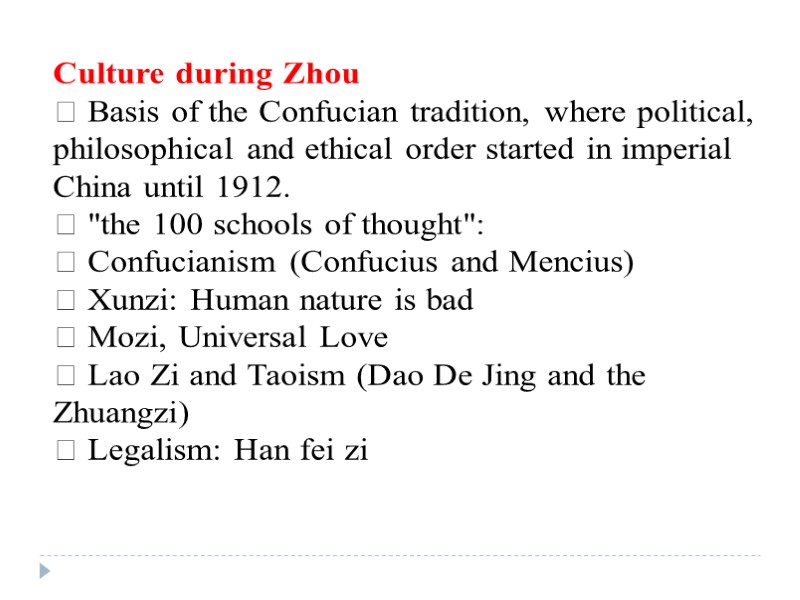
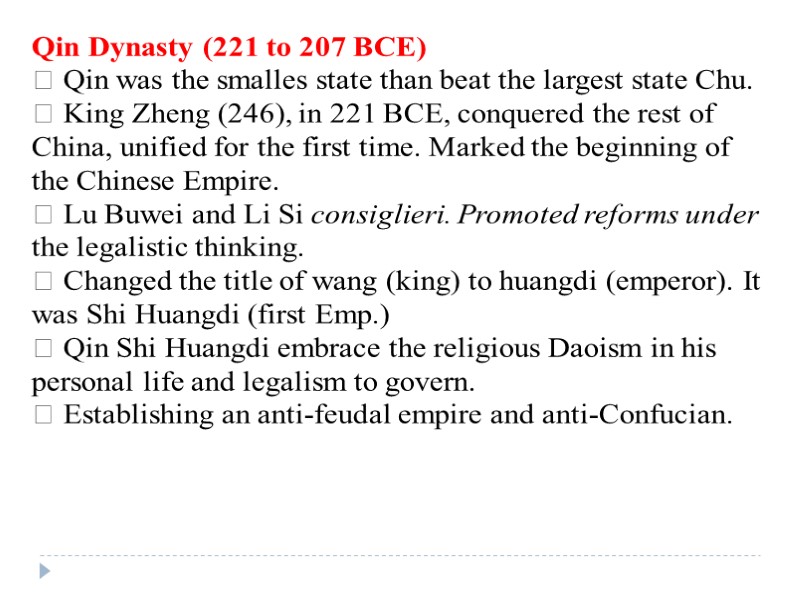
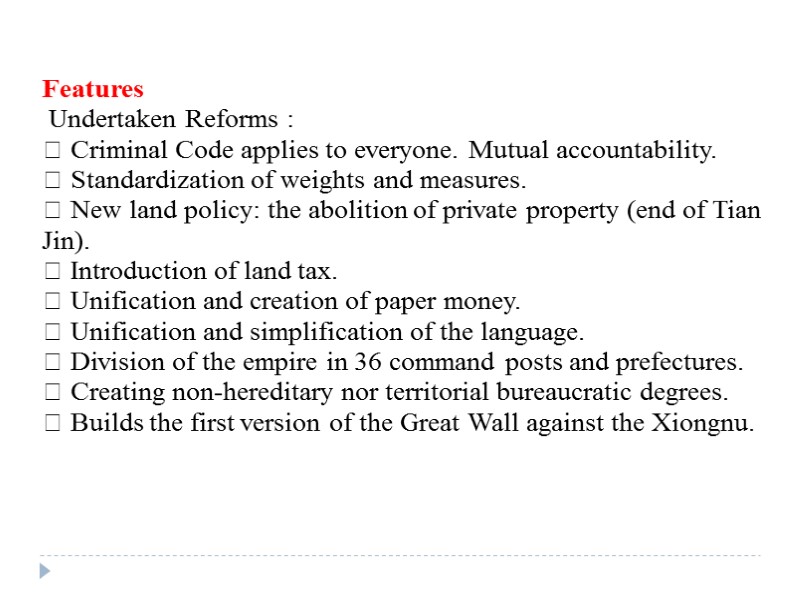
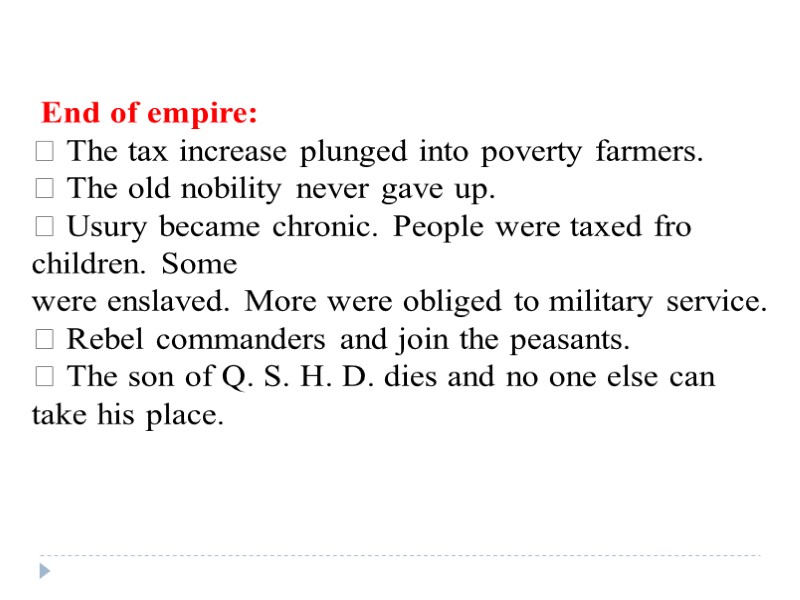
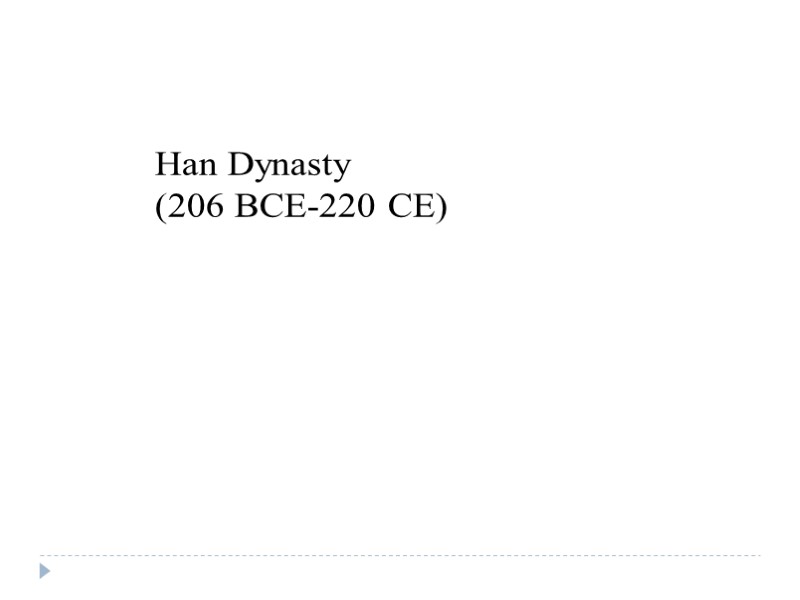
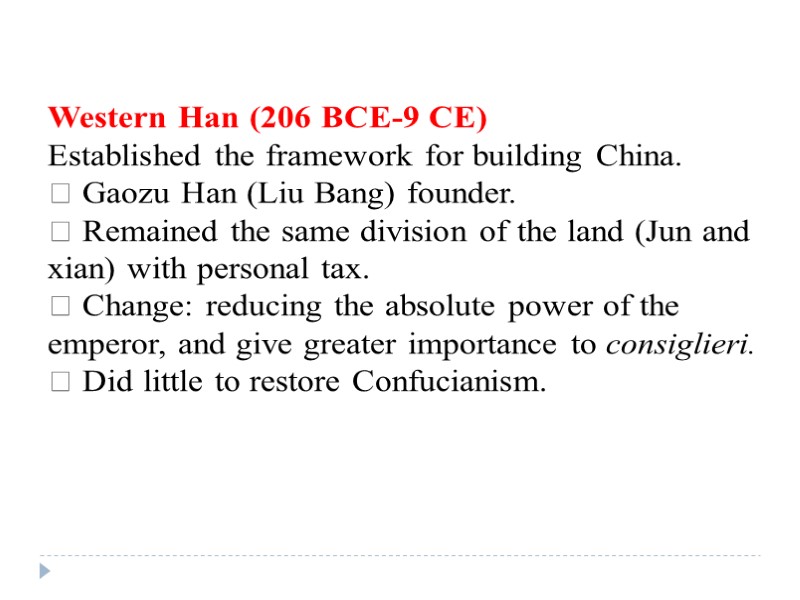
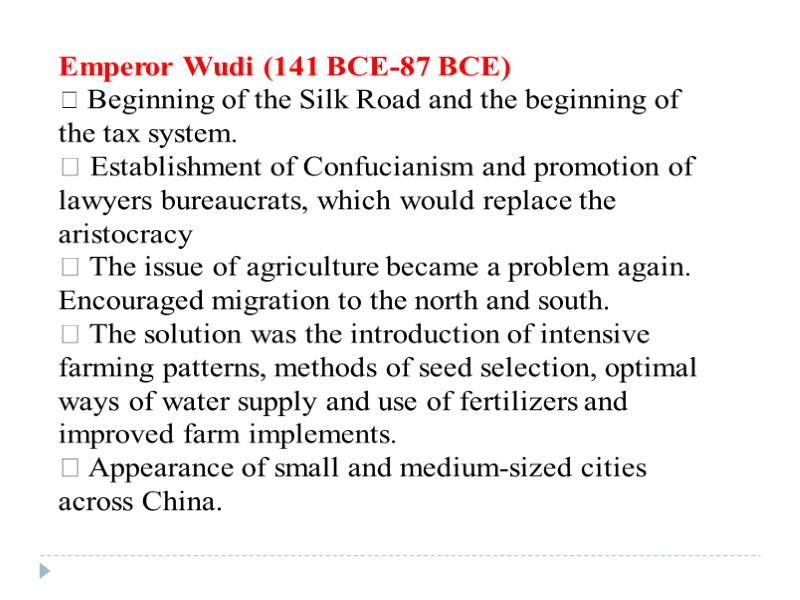
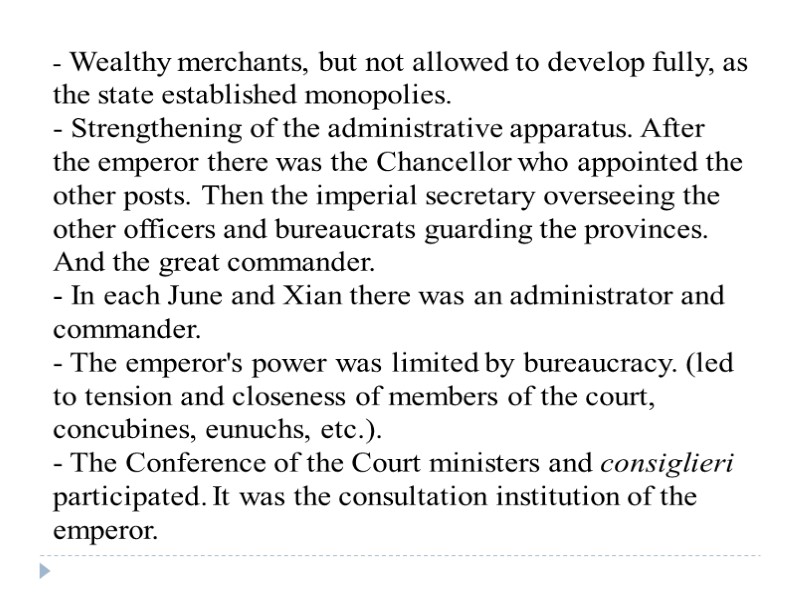


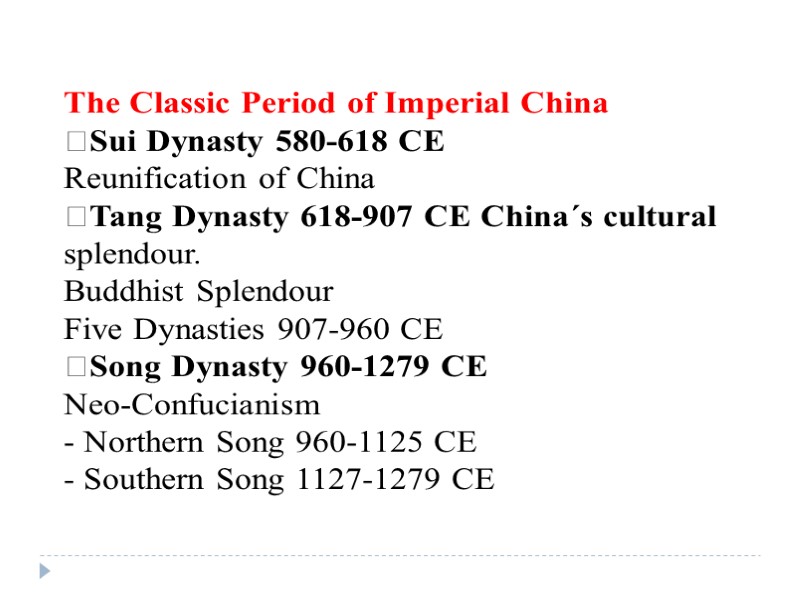
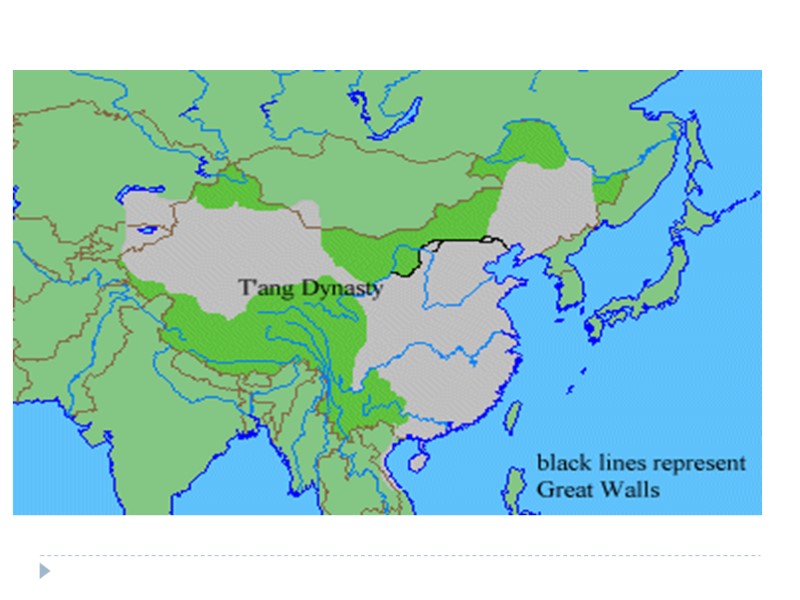

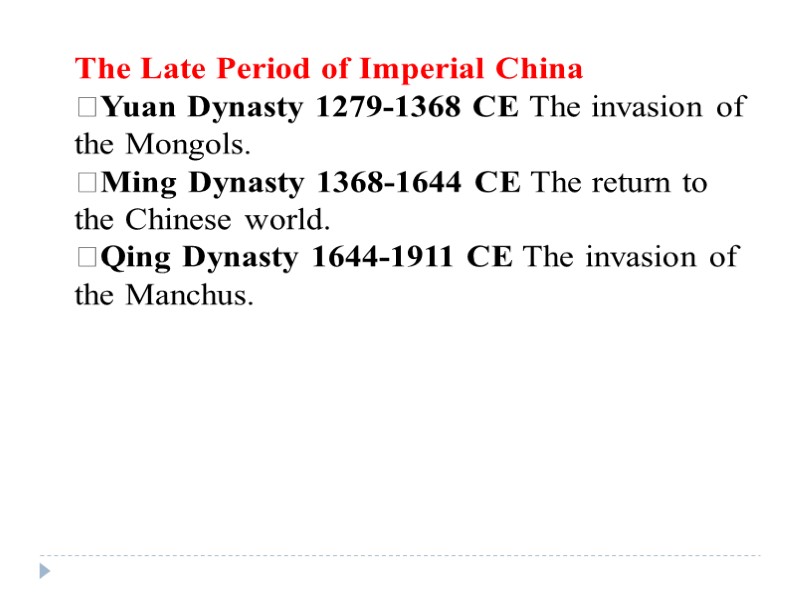
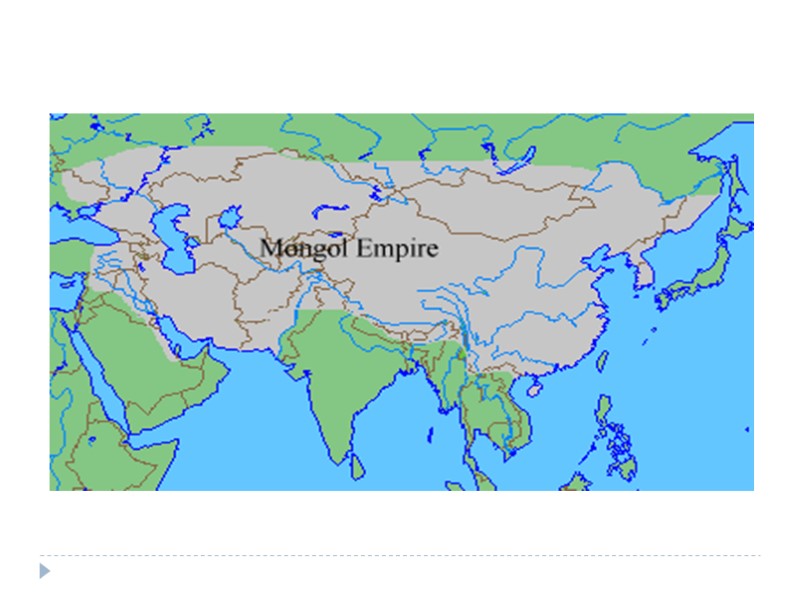



29646-malik_augan_imperial_china.ppt
- Количество слайдов: 34
 IMPERIAL CHINA
IMPERIAL CHINA
 PRINCIPAL IDEAS Large territory: always expanding. Large history: one of the four Classic Civilizations. Large population: always great number of people. Large Culture Dynasties: From Xia (2070–1600 BCE) to Qing (1644-1911 ACE) Foreign invasions: from Xiongnu, Mongols to Manchu. Foreign contacts: from Buddhism, Islam, Judaism, Catholicism, Christianism. Foreign trade: the Silk routes (Land and Sea) Foreign diplomacy: the Tributary system.
PRINCIPAL IDEAS Large territory: always expanding. Large history: one of the four Classic Civilizations. Large population: always great number of people. Large Culture Dynasties: From Xia (2070–1600 BCE) to Qing (1644-1911 ACE) Foreign invasions: from Xiongnu, Mongols to Manchu. Foreign contacts: from Buddhism, Islam, Judaism, Catholicism, Christianism. Foreign trade: the Silk routes (Land and Sea) Foreign diplomacy: the Tributary system.



 This empire stretched beyond the borders of modern-day Mongolia. After defeating the previously dominant Yuezhi in the 2nd century BC, became a dominant power on the steppes of eastern Asia. They were active in southern Siberia, Mongolia, western Manchuria, and the Chinese provinces of Inner Mongolia, Gansuand Xinjiang. Xiongnu
This empire stretched beyond the borders of modern-day Mongolia. After defeating the previously dominant Yuezhi in the 2nd century BC, became a dominant power on the steppes of eastern Asia. They were active in southern Siberia, Mongolia, western Manchuria, and the Chinese provinces of Inner Mongolia, Gansuand Xinjiang. Xiongnu
 China’s Origins No myths nor legends of migration. Hominid remains (2 million years BCE): North Lantian, north of Xi'an (Shaanxi 650.000 to 800.000 years) South: Homo Yanmovensis, northern Yunnan (the oldest Homo erectus in Asia, 1.7 million) Pekin man: 500.000 to 600.000 BCE found in the cave of Zhoukoudian. Homo Sapiens: On the upper Paleolithic 40.000 to 10.000 BCE Transition from hunting to agricultural society from 10.000 to 7.000
China’s Origins No myths nor legends of migration. Hominid remains (2 million years BCE): North Lantian, north of Xi'an (Shaanxi 650.000 to 800.000 years) South: Homo Yanmovensis, northern Yunnan (the oldest Homo erectus in Asia, 1.7 million) Pekin man: 500.000 to 600.000 BCE found in the cave of Zhoukoudian. Homo Sapiens: On the upper Paleolithic 40.000 to 10.000 BCE Transition from hunting to agricultural society from 10.000 to 7.000
 Origin of Chinese Civilization Neolithic culture: Yangshao Culture: 5.000 BCE, Henan, Shaanxi, Shanxi. Rep. Red Ceramic. Longshao Culture : 3.000 BCE, in Shandong. Rep. Black ceramic.
Origin of Chinese Civilization Neolithic culture: Yangshao Culture: 5.000 BCE, Henan, Shaanxi, Shanxi. Rep. Red Ceramic. Longshao Culture : 3.000 BCE, in Shandong. Rep. Black ceramic.

 Prehistoric Creation Myth: Ban gu The Three Sovereigns: Fuxi: invented grazing, marriage and musical instruments. Suiren: invented fire. Shennong: Invention of agriculture, medicine and the rudiments of commerce. The Five Emperors (2.697 BC): Huangdi, Yao, Shun, etc.: inventor of writing, calendar, rituals, music, archery and water control. Provided the civilizing elements. Created the ideal profile of government: imperial, and a strong centralized organization.
Prehistoric Creation Myth: Ban gu The Three Sovereigns: Fuxi: invented grazing, marriage and musical instruments. Suiren: invented fire. Shennong: Invention of agriculture, medicine and the rudiments of commerce. The Five Emperors (2.697 BC): Huangdi, Yao, Shun, etc.: inventor of writing, calendar, rituals, music, archery and water control. Provided the civilizing elements. Created the ideal profile of government: imperial, and a strong centralized organization.
 Dynasty •Xia Dynasty About 1994 BCE - 1766 BCE •Shang Dynasty 1766 BCE - 1027 BCE •Zhou Dynasty 1122 BCE -256 BCE plus suppliment •Qin Dynasty 221 BCE - 206 BCE •Early Han Dynasty 206 BCE - 9 AD •Xin Dynasty 9 AD - 24 AD •Later Han Dynasty 25 AD - 220 AD •Three Kingdoms - Period of Disunion 220 AD - 280 AD •Sui Dynasty 589 AD - 618 AD •Tang Dynasty 618 AD - 907 A •Song Dynasty 969 AD - 1279 AD •Yuan Dyansty 1279 AD - 1368 AD •Ming Dynasty 1368 AD - 1644 AD •Manchu or Qing Dynasty 1644 AD - 1912 AD
Dynasty •Xia Dynasty About 1994 BCE - 1766 BCE •Shang Dynasty 1766 BCE - 1027 BCE •Zhou Dynasty 1122 BCE -256 BCE plus suppliment •Qin Dynasty 221 BCE - 206 BCE •Early Han Dynasty 206 BCE - 9 AD •Xin Dynasty 9 AD - 24 AD •Later Han Dynasty 25 AD - 220 AD •Three Kingdoms - Period of Disunion 220 AD - 280 AD •Sui Dynasty 589 AD - 618 AD •Tang Dynasty 618 AD - 907 A •Song Dynasty 969 AD - 1279 AD •Yuan Dyansty 1279 AD - 1368 AD •Ming Dynasty 1368 AD - 1644 AD •Manchu or Qing Dynasty 1644 AD - 1912 AD
 Shang Dynasty (1700 to 1027 BC) Ancient China Xia, 2100-1800 BCE; Erlitou Shang, 1700-1027 BCE; Anyang orYin - oracle-bone characters (origin of the current writing). - Bronze Perfection. - King: secular and religious leader. - Supreme Deity, "Shang di" or "Tian", related to ancestors.
Shang Dynasty (1700 to 1027 BC) Ancient China Xia, 2100-1800 BCE; Erlitou Shang, 1700-1027 BCE; Anyang orYin - oracle-bone characters (origin of the current writing). - Bronze Perfection. - King: secular and religious leader. - Supreme Deity, "Shang di" or "Tian", related to ancestors.

 Zhou Dynasty (1027 to 221 BCE) Zhou Dynasty (1.027 to 221 BCE.) Western Zhou Dynasty (1.027 to 771 BCE), capital near Xi'an. * Duke of Zhou: Confucian Virtues * Fengjie System: Chinese feudalism. Eastern Zhou Dynasty (771 to 221 BC) capital Chengzhou * Spring and Autumn Period (771 to 481 BC) * Warring States Period There are only 7 states, we begin to build the Great Wall and the Art of War (Sun Tzu).
Zhou Dynasty (1027 to 221 BCE) Zhou Dynasty (1.027 to 221 BCE.) Western Zhou Dynasty (1.027 to 771 BCE), capital near Xi'an. * Duke of Zhou: Confucian Virtues * Fengjie System: Chinese feudalism. Eastern Zhou Dynasty (771 to 221 BC) capital Chengzhou * Spring and Autumn Period (771 to 481 BC) * Warring States Period There are only 7 states, we begin to build the Great Wall and the Art of War (Sun Tzu).
 Features (Warring States) Tenure: Private ownership of land (feudal system). Emergence of land-owning groups. Independent farmers. Disappearance of hereditary feudal lords. Surge buying and selling of land. The merchants became independent; The regions are specialized; Using bronze coin;
Features (Warring States) Tenure: Private ownership of land (feudal system). Emergence of land-owning groups. Independent farmers. Disappearance of hereditary feudal lords. Surge buying and selling of land. The merchants became independent; The regions are specialized; Using bronze coin;

 Culture during Zhou Basis of the Confucian tradition, where political, philosophical and ethical order started in imperial China until 1912. "the 100 schools of thought": Confucianism (Confucius and Mencius) Xunzi: Human nature is bad Mozi, Universal Love Lao Zi and Taoism (Dao De Jing and the Zhuangzi) Legalism: Han fei zi
Culture during Zhou Basis of the Confucian tradition, where political, philosophical and ethical order started in imperial China until 1912. "the 100 schools of thought": Confucianism (Confucius and Mencius) Xunzi: Human nature is bad Mozi, Universal Love Lao Zi and Taoism (Dao De Jing and the Zhuangzi) Legalism: Han fei zi
 Qin Dynasty (221 to 207 BCE) Qin was the smalles state than beat the largest state Chu. King Zheng (246), in 221 BCE, conquered the rest of China, unified for the first time. Marked the beginning of the Chinese Empire. Lu Buwei and Li Si consiglieri. Promoted reforms under the legalistic thinking. Changed the title of wang (king) to huangdi (emperor). It was Shi Huangdi (first Emp.) Qin Shi Huangdi embrace the religious Daoism in his personal life and legalism to govern. Establishing an anti-feudal empire and anti-Confucian.
Qin Dynasty (221 to 207 BCE) Qin was the smalles state than beat the largest state Chu. King Zheng (246), in 221 BCE, conquered the rest of China, unified for the first time. Marked the beginning of the Chinese Empire. Lu Buwei and Li Si consiglieri. Promoted reforms under the legalistic thinking. Changed the title of wang (king) to huangdi (emperor). It was Shi Huangdi (first Emp.) Qin Shi Huangdi embrace the religious Daoism in his personal life and legalism to govern. Establishing an anti-feudal empire and anti-Confucian.
 Features Undertaken Reforms : Criminal Code applies to everyone. Mutual accountability. Standardization of weights and measures. New land policy: the abolition of private property (end of Tian Jin). Introduction of land tax. Unification and creation of paper money. Unification and simplification of the language. Division of the empire in 36 command posts and prefectures. Creating non-hereditary nor territorial bureaucratic degrees. Builds the first version of the Great Wall against the Xiongnu.
Features Undertaken Reforms : Criminal Code applies to everyone. Mutual accountability. Standardization of weights and measures. New land policy: the abolition of private property (end of Tian Jin). Introduction of land tax. Unification and creation of paper money. Unification and simplification of the language. Division of the empire in 36 command posts and prefectures. Creating non-hereditary nor territorial bureaucratic degrees. Builds the first version of the Great Wall against the Xiongnu.
 End of empire: The tax increase plunged into poverty farmers. The old nobility never gave up. Usury became chronic. People were taxed fro children. Some were enslaved. More were obliged to military service. Rebel commanders and join the peasants. The son of Q. S. H. D. dies and no one else can take his place.
End of empire: The tax increase plunged into poverty farmers. The old nobility never gave up. Usury became chronic. People were taxed fro children. Some were enslaved. More were obliged to military service. Rebel commanders and join the peasants. The son of Q. S. H. D. dies and no one else can take his place.
 Han Dynasty (206 BCE-220 CE)
Han Dynasty (206 BCE-220 CE)
 Western Han (206 BCE-9 CE) Established the framework for building China. Gaozu Han (Liu Bang) founder. Remained the same division of the land (Jun and xian) with personal tax. Change: reducing the absolute power of the emperor, and give greater importance to consiglieri. Did little to restore Confucianism.
Western Han (206 BCE-9 CE) Established the framework for building China. Gaozu Han (Liu Bang) founder. Remained the same division of the land (Jun and xian) with personal tax. Change: reducing the absolute power of the emperor, and give greater importance to consiglieri. Did little to restore Confucianism.
 Emperor Wudi (141 BCE-87 BCE) Beginning of the Silk Road and the beginning of the tax system. Establishment of Confucianism and promotion of lawyers bureaucrats, which would replace the aristocracy The issue of agriculture became a problem again. Encouraged migration to the north and south. The solution was the introduction of intensive farming patterns, methods of seed selection, optimal ways of water supply and use of fertilizers and improved farm implements. Appearance of small and medium-sized cities across China.
Emperor Wudi (141 BCE-87 BCE) Beginning of the Silk Road and the beginning of the tax system. Establishment of Confucianism and promotion of lawyers bureaucrats, which would replace the aristocracy The issue of agriculture became a problem again. Encouraged migration to the north and south. The solution was the introduction of intensive farming patterns, methods of seed selection, optimal ways of water supply and use of fertilizers and improved farm implements. Appearance of small and medium-sized cities across China.
 - Wealthy merchants, but not allowed to develop fully, as the state established monopolies. - Strengthening of the administrative apparatus. After the emperor there was the Chancellor who appointed the other posts. Then the imperial secretary overseeing the other officers and bureaucrats guarding the provinces. And the great commander. - In each June and Xian there was an administrator and commander. - The emperor's power was limited by bureaucracy. (led to tension and closeness of members of the court, concubines, eunuchs, etc.). - The Conference of the Court ministers and consiglieri participated. It was the consultation institution of the emperor.
- Wealthy merchants, but not allowed to develop fully, as the state established monopolies. - Strengthening of the administrative apparatus. After the emperor there was the Chancellor who appointed the other posts. Then the imperial secretary overseeing the other officers and bureaucrats guarding the provinces. And the great commander. - In each June and Xian there was an administrator and commander. - The emperor's power was limited by bureaucracy. (led to tension and closeness of members of the court, concubines, eunuchs, etc.). - The Conference of the Court ministers and consiglieri participated. It was the consultation institution of the emperor.


 The Classic Period of Imperial China Sui Dynasty 580-618 CE Reunification of China Tang Dynasty 618-907 CE China´s cultural splendour. Buddhist Splendour Five Dynasties 907-960 CE Song Dynasty 960-1279 CE Neo-Confucianism - Northern Song 960-1125 CE - Southern Song 1127-1279 CE
The Classic Period of Imperial China Sui Dynasty 580-618 CE Reunification of China Tang Dynasty 618-907 CE China´s cultural splendour. Buddhist Splendour Five Dynasties 907-960 CE Song Dynasty 960-1279 CE Neo-Confucianism - Northern Song 960-1125 CE - Southern Song 1127-1279 CE


 The Late Period of Imperial China Yuan Dynasty 1279-1368 CE The invasion of the Mongols. Ming Dynasty 1368-1644 CE The return to the Chinese world. Qing Dynasty 1644-1911 CE The invasion of the Manchus.
The Late Period of Imperial China Yuan Dynasty 1279-1368 CE The invasion of the Mongols. Ming Dynasty 1368-1644 CE The return to the Chinese world. Qing Dynasty 1644-1911 CE The invasion of the Manchus.



 Thank you for your kind attention and Have a Great Weekend!
Thank you for your kind attention and Have a Great Weekend!
